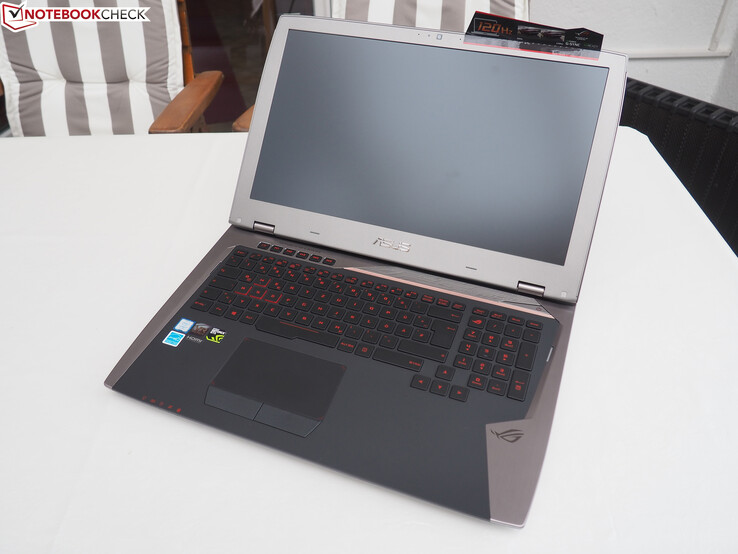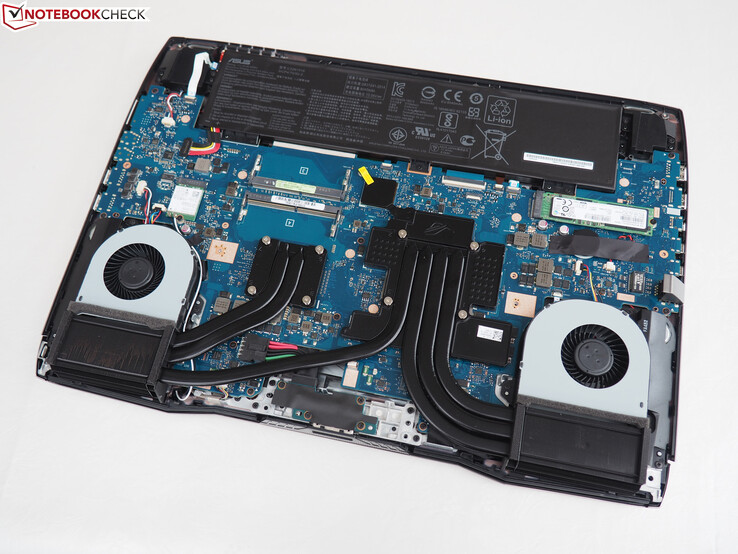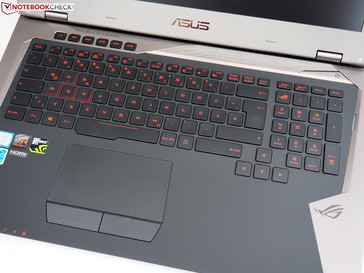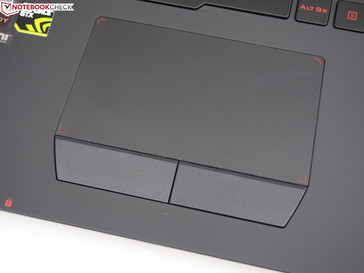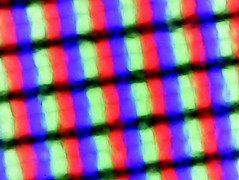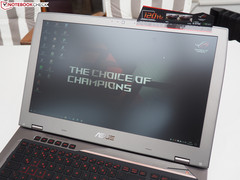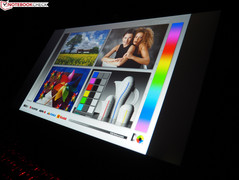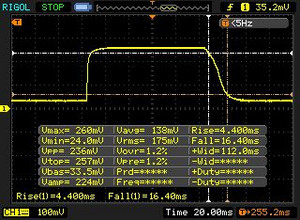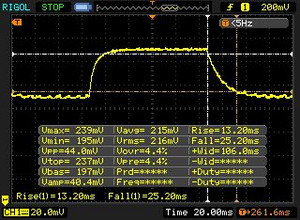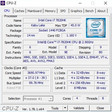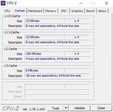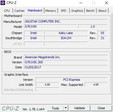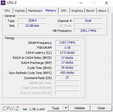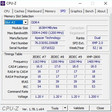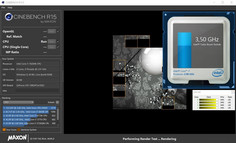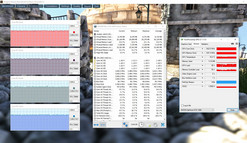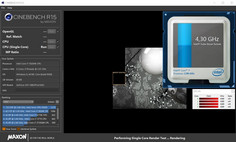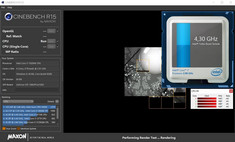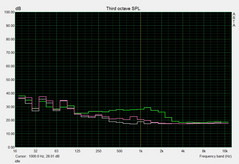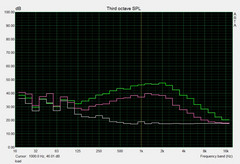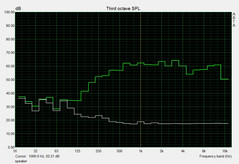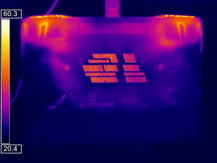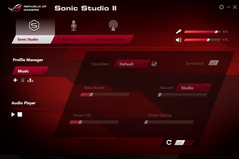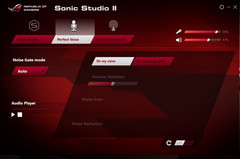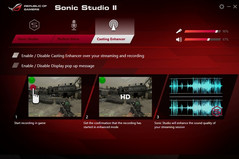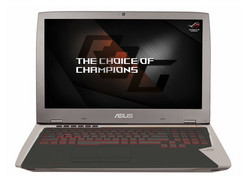Asus ROG G701VIK Notebook Review
For the original German review, see here.
With the release of Intel's Kaby Lake generation, notebook manufacturers are outdoing one another with updates of their product ranges. We have already reviewed many new releases in the past few weeks and months. From compact 13-inchers, such as the Alienware 13 R3, to massive 17-inch colossuses, such as the MSI GT73VR 7RF - the gaming range has had almost everything.
The Asus G701 clearly leans towards the upper spectrum as far as the size and weight, as well as the price and performance go. While most gaming representatives choose a Core i7-7700HQ and a GeForce GTX 1060 or GTX 1070, Asus gives the G701 the top-of-the-line models Core i7-7820HK and GeForce GTX 1080, which are additionally even overclocked.
However, the total package is correspondingly expensive: The 17-inch device costs more than 3,000 Euros (~$3164). Our review unit with the model ending VIK-BA049T also has 32 GB of DDR4-RAM (2x 16 GB @2400 MHz) and an SSD-RAID that consists of two 256 GB M.2 drives. The display only comes with a Full HD panel, but it can make use of 120 Hz and Nvidia's G-Sync technology.
We shall test in the rest of the article whether it is worthwhile to pay a premium over more affordable gaming notebooks.
Case
At first glance, the G701 heavily resembles the 17-inch sibling, the G752. The externals of the case are dominated by silver surfaces made of either brushed aluminum (lid) or textured plastic (bottom). Opening the case reveals a combination of black and silver. To heighten the comfort, or rather improve the feel to the touch, the palm rest was coated with a soft-touch finish, which, as usual, quickly becomes dirty (fingerprints, etc.).
Regarding the design, we are a bit torn. On the one hand, the color accents create a fresh and friendly appearance; on the other hand, many elements appear rather playful and simply thrown together. The no less eye-catching Alienware notebooks (compare for example the 15 R3) are more noble and coherent in our eyes. This impression is also related to the manufacturing, which leaves something to be desired with the Asus G701. Our test device had several gaps between the bottom plate and the metallic sides, resulting in unhandsome edges. Speaking of edges: Some of the port holes are so sharp that you could theoretically injure your fingers or damage cables. Asus should improve this in order to justify the luxury price.
In terms of stability, the case delivers perfectly: The base unit can hardly be pushed in, even when applying strong pressure. We also liked the hinges. Even though the lid can be opened with one hand without any issues (maximum opening angle 130 °), the display remains stable in bumpy situations.
One of the biggest weaknesses of the G701 is its hefty weight. The 17-incher is, at 4.0 kg, one of the heaviest gaming notebooks on the market, although some rivals, such as the MSI GT73VR and the Acer Predator 17 weigh even more. The size is also not bad: Compared to slim gamers (for example, the Aorus X7 DT v6), the G701 appears exceptionally thick. Including the rubber feet, we measure 4.5 cm.
Connectivity
Ports
Acer has thought of all the important ports. Besides the notebook-typical compulsory ones (3x USB 3.0 Type-A, RJ45 LAN, card reader, headphone jack, microphone jack), the G701 also offers two USB 3.1 Gen2 Type-C ports, one of which is Thunderbolt 3 capable. In case the built-in graphics chip should prove to become slow someday, external solutions could give it a power boost. Classic monitors connect via the HDMI port or Mini DisplayPort.
The port placement is less convincing. Since all ports - aside from the Kensington lock slot and the (tricky to use) charging port - are placed in the front or middle area of the side, the action radius of a mouse is potentially considerably limited, whether you are left or right-handed. Most ports would be better off more towards the back or at the rear. Other gaming notebooks have a more carefully considered port placement.
SD-Card Reader
Asus makes no mistakes with the card reader. With a maximum of 246 MB/s (sequential reading), our Toshiba reference card, which can supposedly transfer up to 260 MB/s, is almost completely pushed to its limits. Most rivals have to take their hat off, whether it is the Aorus X7 DT v6, the Acer Predator 17, or the in-house G752VS. Even the lightning-quick card reader of the MSI GT72VR or the GT73VR is slightly slower.
| SD Card Reader | |
| average JPG Copy Test (av. of 3 runs) | |
| Asus G701VIK-BA049T | |
| MSI GT73VR 7RF-296 | |
| MSI GT72VR 7RE-433 | |
| Aorus X7 DT v6 | |
| Acer Predator 17 G9-793-77LG | |
| Asus G752VS-XB78K | |
| maximum AS SSD Seq Read Test (1GB) | |
| Asus G701VIK-BA049T | |
| MSI GT73VR 7RF-296 | |
| MSI GT72VR 7RE-433 | |
| Aorus X7 DT v6 | |
| Acer Predator 17 G9-793-77LG | |
| Asus G752VS-XB78K | |
Communication
The radio performance is in the middle of the pack. While receiving at 675 MBit/s is a very good figure, the sending speed of 354 MBit/s (1 m away from the router) is only second-rate. The MSI GT72VR and the MSI GT73VR achieve almost twice that speed with their Killer chips. The G701 comes with the Intel Dual Band Wireless-AC 8260 that supports, as the name already implies, 802.11 a/b/g/n/ac WLAN with a maximum speed of 867 MBit/s. Bluetooth 4.2 is on-board as well.
| Networking | |
| iperf3 transmit AX12 | |
| MSI GT73VR 7RF-296 | |
| MSI GT72VR 7RE-433 | |
| Asus G701VIK-BA049T | |
| iperf3 receive AX12 | |
| MSI GT73VR 7RF-296 | |
| Asus G701VIK-BA049T | |
| MSI GT72VR 7RE-433 | |
Accessories
To satisfy the power hunger of the GeForce GTX 1080, the 17-inch device comes with a massive 330-watt power supply. It is about 20 x 10 x 4 cm big and weighs 1.3 kg. There is also a small manual in the box, as well as a warranty card, a cleaning cloth, and a cable strap. Receiving no recovery and driver DVDs is normal nowadays (no optical drive). However, most manufacturers also save the cost of appropriate USB sticks.
Maintenance
We would not necessarily describe maintenance on the G701 as comfortable. Before you can take off the bottom shell, you have to remove 10 rubber covers and the screws beneath them. In addition, the "Republic of Gamers" strip has to be removed; it sits behind the hinges and hides two more fixing screws in the middle (see last picture in the gallery). Only then can you laboriously remove the bottom from its fixing.
Nevertheless, the effort is worth it: Besides the screw-fastened battery and the wireless module, the cooling system (a total of six heat-pipes) and both fans are then also accessible. Moreover, we discover an M.2 slot and two unoccupied RAM slots. The secondary M.2 slot and the remaining RAM slots are most likely on the other side of the motherboard (below the keyboard).
Software
The G701 offers many tools to satisfy tuning fans. Most programs come together in the Gaming center. Not only can you change the keyboard backlight (Hot Zone) and the case light (Light Bar) there, you can also modify the image mode (Splendid), the fan speed, the sound (Sonic Rader II + Sonic Studio II), the gaming profile, storage management, and data traffic (Gamefirst IV). The special keys above the keyboard are set via MacroKey.
Another highlight is the optional overclocking. If you choose the Turbo-Gear setting "Extreme" instead of "Standard", the CPU clock speed of 2.9 to 3.9 GHz increases to a whopping 4.3 GHz. The GeForce GTX 1080 is accelerated from 1582 - 1771 MHz (core) and 5000 MHz (storage) to 1681 - 1870 MHz and 5150 MHz. Advanced users can regulate the details manually. Our emissions and energy tests were all performed in standard mode; only the benchmarks were passed with activated overclocking.
Warranty
The warranty extends over two years. Please see our Guarantees, Return Policies and Warranties FAQ for country-specific information.
Input Devices
Keyboard
The keyboard left us with mixed feelings. On the one hand, the chiclet-designed keys score with a usable dimensioning (15 x 15 mm); on the other hand, some details could be improved. For example, the keystroke dynamics are similarly soft as on the Alienware notebooks but feel less precise and seem a bit louder. The red (and quite uneven) backlight also cannot compete due to its modest intensity.
Labeling the keys in red is also not a very good decision: The letters are not perfectly discernible even during the day. The layout (combined Ins/Del key) has some flaws as well. However, the detached direction arrows look nice; they are usually tiny and squeezed into the main/number block on most notebooks. Core gamers can also be happy about five configurable macro keys.
Touchpad
The touchpad can hardly be criticized. The mouse replacement is satisfyingly large at 11.5 x 6.5 cm. Thanks to the pleasantly smooth surface, fingers can slide very well on the touchpad. We could not find any special software on the test device to customize the gestures. Nevertheless, Windows 10 natively supports two-finger zooming and scrolling, which functions decently in everyday use.
Since the touchpad has no backlight, most buyers will be pleased with the subtle lowering. This way, the mouse substitute can be found relatively quickly in the dark as well. We were not so happy with the dedicated mouse buttons. The spongy feedback and the clattering sound do not live up to the premium standards.
Display
The Asus G701 is one of the first notebooks with a 120 Hz panel based on IPS. The biggest advantage of IPS technology is the wide viewing angles. Though OLED panels offer even wider viewing angles, the built-in Full HD display with the identification B173HAN01.1 (AUO119D) is noticeably superior to classic TN panels.
| |||||||||||||||||||||||||
Brightness Distribution: 91 %
Center on Battery: 306 cd/m²
Contrast: 1133:1 (Black: 0.27 cd/m²)
ΔE ColorChecker Calman: 3.98 | ∀{0.5-29.43 Ø4.78}
ΔE Greyscale Calman: 4.15 | ∀{0.09-98 Ø5}
89% sRGB (Argyll 1.6.3 3D)
58% AdobeRGB 1998 (Argyll 1.6.3 3D)
64.1% AdobeRGB 1998 (Argyll 3D)
87.7% sRGB (Argyll 3D)
68.8% Display P3 (Argyll 3D)
Gamma: 2.45
CCT: 7386 K
| Asus G701VIK-BA049T B173HAN01.1 (AUO119D), 1920x1080 | MSI GT73VR 7RF-296 N173HHE-G32 (CMN1747), 1920x1080 | Aorus X7 DT v6 AUO1096, 2560x1440 | Asus G752VS-XB78K LG Philips LP173WF4-SPF3 (LGD04E8), 1920x1080 | MSI GT72VR 7RE-433 Chi Mei N173HHE-G32 (CMN1747), 1920x1080 | Acer Predator 17 G9-793-77LG AU Optronics B173ZAN01.0 (AUO109B), 3840x2160 | |
|---|---|---|---|---|---|---|
| Display | 26% | -8% | -3% | -1% | 32% | |
| Display P3 Coverage (%) | 68.8 | 90.6 32% | 59.6 -13% | 66.9 -3% | 68.3 -1% | 86.9 26% |
| sRGB Coverage (%) | 87.7 | 99.9 14% | 82.8 -6% | 85.2 -3% | 86.7 -1% | 100 14% |
| AdobeRGB 1998 Coverage (%) | 64.1 | 84.7 32% | 60.1 -6% | 62.3 -3% | 63.4 -1% | 99.4 55% |
| Response Times | 49% | 39% | -5% | 45% | -9% | |
| Response Time Grey 50% / Grey 80% * (ms) | 38 ? | 26 ? 32% | 21.6 ? 43% | 38 ? -0% | 29 ? 24% | 37 ? 3% |
| Response Time Black / White * (ms) | 20 ? | 7 ? 65% | 13.2 ? 34% | 22 ? -10% | 7 ? 65% | 24 ? -20% |
| PWM Frequency (Hz) | 59.5 | |||||
| Screen | -37% | -28% | 1% | -36% | 12% | |
| Brightness middle (cd/m²) | 306 | 307 0% | 339.5 11% | 328 7% | 299 -2% | 336 10% |
| Brightness (cd/m²) | 299 | 284 -5% | 309 3% | 317 6% | 277 -7% | 320 7% |
| Brightness Distribution (%) | 91 | 85 -7% | 80 -12% | 88 -3% | 87 -4% | 88 -3% |
| Black Level * (cd/m²) | 0.27 | 0.25 7% | 0.45 -67% | 0.3 -11% | 0.27 -0% | 0.25 7% |
| Contrast (:1) | 1133 | 1228 8% | 754 -33% | 1093 -4% | 1107 -2% | 1344 19% |
| Colorchecker dE 2000 * | 3.98 | 9.65 -142% | 6.88 -73% | 3.74 6% | 9.65 -142% | 3.61 9% |
| Colorchecker dE 2000 max. * | 7.29 | 16.36 -124% | 9.99 -37% | 8.97 -23% | 15.43 -112% | 6.02 17% |
| Greyscale dE 2000 * | 4.15 | 10.07 -143% | 6.57 -58% | 2.67 36% | 9.68 -133% | 4.78 -15% |
| Gamma | 2.45 90% | 2.12 104% | 2.04 108% | 2.41 91% | 1.89 116% | 2.32 95% |
| CCT | 7386 88% | 12145 54% | 8608 76% | 6861 95% | 11652 56% | 6185 105% |
| Color Space (Percent of AdobeRGB 1998) (%) | 58 | 75 29% | 54 -7% | 56 -3% | 75 29% | 88 52% |
| Color Space (Percent of sRGB) (%) | 89 | 100 12% | 82 -8% | 85 -4% | 100 12% | 100 12% |
| Total Average (Program / Settings) | 13% /
-13% | 1% /
-15% | -2% /
-1% | 3% /
-18% | 12% /
13% |
* ... smaller is better
Color accuracy is also better than on other 120 Hz models we have tested so far. Whereas the MSI GT73VR and the GT72VR achieved a DeltaE-2000 value of around 10, the Asus G701 scores just close to 4 (ideal value is below 3). With some calibration we managed to push the result to a very good 0.8 (grayscale) and 1.93 (ColorChecker). This also made the slight blue tint that we noticed before disappear. The color-space coverage turns out to be unspectacular. 89% sRGB and 58% AdobeRGB are typical for a laptop.
The G701 does quite well in outdoor use. The combination of an anti-glare surface and respectable brightness (c. 300 cd/m²) helps in direct or indirect sunlight. The black value is also great for an IPS display: 0.27 cd/m² does not make dark scenes and backgrounds appear too grayish. The calculated contrast amounts to more than 1100:1, a value oriented to the 120 Hz panels of the MSI GT72VR and the GT73VR.
Regarding the response time, the latter notebooks are clearly ahead. The Asus G701 takes almost three times longer (20 vs. 7 ms) to switch from black to white. Another downside is the mediocre illumination level. Our test device had some unpleasant halation on the edges.
Display Response Times
| ↔ Response Time Black to White | ||
|---|---|---|
| 20 ms ... rise ↗ and fall ↘ combined | ↗ 4 ms rise | |
| ↘ 16 ms fall | ||
| The screen shows good response rates in our tests, but may be too slow for competitive gamers. In comparison, all tested devices range from 0.1 (minimum) to 240 (maximum) ms. » 42 % of all devices are better. This means that the measured response time is similar to the average of all tested devices (20.2 ms). | ||
| ↔ Response Time 50% Grey to 80% Grey | ||
| 38 ms ... rise ↗ and fall ↘ combined | ↗ 13 ms rise | |
| ↘ 25 ms fall | ||
| The screen shows slow response rates in our tests and will be unsatisfactory for gamers. In comparison, all tested devices range from 0.165 (minimum) to 636 (maximum) ms. » 54 % of all devices are better. This means that the measured response time is worse than the average of all tested devices (31.6 ms). | ||
Screen Flickering / PWM (Pulse-Width Modulation)
| Screen flickering / PWM not detected | |||
In comparison: 53 % of all tested devices do not use PWM to dim the display. If PWM was detected, an average of 8101 (minimum: 5 - maximum: 343500) Hz was measured. | |||
Performance
Asus made no comprises in terms of performance. An overclocked quad-core CPU and high-end GPU here, 32 GB of RAM and an SSD-RAID there: The G701's hardware leaves nothing to be desired and promises to be highly future-proof.
Processor
As mentioned in the section Software, the Core i7-7820HK works at 4.3 GHz in the Turbo Gear Extreme setting. The clock speed is consistently upheld in single-core applications. When handling multicore applications, the value fluctuates between 3.8 and 4.3 GHz, which is still very impressive. If you deactivate the optional overclocking and choose the Standard mode, the 45-watt chip works at 3.5 to 3.9 GHz, depending on core load. As a comparison: The more affordable Kaby Lake sibling Core i7-7700HQ, which has only 6 instead of 8 MB L3-Cache and no unoccupied multiplier, achieves at best 3.8 GHz under load.
The Asus G701 is one of the front runners in the CPU benchmarks thanks to its overclocking. Both in Cinebench R15 and Cinebench R11.5, the 17-incher lands in first place. The second place goes to the MSI GT73VR, whose Core i7-7820HK is overclocked to 4.0 GHz. Notebooks with the Core i7-6820HK are about 10% slower, laptops with the Core i7-7700HQ are almost 20% weaker. On a side note, the integrated graphics unit (HD Graphics 630) cannot be used for energy-saving purposes due to G-Sync. The GeForce GTX 1080 is permanently active.
| Cinebench R11.5 | |
| CPU Single 64Bit | |
| Asus G701VIK-BA049T | |
| MSI GT73VR 7RF-296 | |
| Aorus X7 DT v6 | |
| MSI GT72VR 7RE-433 | |
| Asus G752VS-XB78K | |
| CPU Multi 64Bit | |
| Asus G701VIK-BA049T | |
| MSI GT73VR 7RF-296 | |
| Aorus X7 DT v6 | |
| Asus G752VS-XB78K | |
| MSI GT72VR 7RE-433 | |
System Performance
The state-of-the-art and mighty powerful components guarantee excellent system performance. Neither in PCMark 7 nor in PCMark 8 can a comparison device surpass the Asus G701. As is usual for notebooks with an SSD, the operating system boots extremely quickly and has very fast response times in general (launching applications, loading times, etc.).
| PCMark 8 | |
| Home Score Accelerated v2 | |
| Asus G701VIK-BA049T | |
| Asus G752VS-XB78K | |
| Aorus X7 DT v6 | |
| MSI GT72VR 7RE-433 | |
| Acer Predator 17 G9-793-77LG | |
| Work Score Accelerated v2 | |
| Asus G701VIK-BA049T | |
| Asus G752VS-XB78K | |
| MSI GT72VR 7RE-433 | |
| Aorus X7 DT v6 | |
| PCMark 7 - Score | |
| Asus G701VIK-BA049T | |
| MSI GT73VR 7RF-296 | |
| Asus G752VS-XB78K | |
| MSI GT72VR 7RE-433 | |
| PCMark 7 Score | 7903 points | |
| PCMark 8 Home Score Accelerated v2 | 5662 points | |
| PCMark 8 Work Score Accelerated v2 | 5846 points | |
Help | ||
Storage Devices
Asus also gets the performance crown in terms of storage devices. To outdo other high-end devices, the manufacturer combines two PCIe SSDs into a RAID-0 array. It is based on the brand-new Samsung SM961 that already excited us in the Nexoc G734IV. In a double pack, the performance is another notch higher. The M.2 drives sequentially achieve more than 3000 MB/s (reading) or 2000 MB/s (writing). Normal SATA-III SSDs, such as the one in the MSI GT72VR, attain only a fraction of that.
The fact that Asus foregoes 2.5-inch slots, despite there being enough room inside the notebook, is somewhat incomprehensible. This would be a low-cost way to expand the storage volume with HDDs or SSHDs, if needed. Although the G701 can be purchased with a total of 1024 instead of 512 GB, some customers will expect and/or need more in times of large movie and game collections (Call of Duty Infinite Warfare alone takes up around 70 GB). After all, not everyone wants to carry around an external hard drive all the time.
| Asus G701VIK-BA049T 2x Samsung SM961 MZVPW256HEGL NVMe (RAID 0) | MSI GT73VR 7RF-296 2x Samsung SM951 MZVPV256HDGL (RAID 0) | Aorus X7 DT v6 Samsung SM951 MZVPV512HDGL m.2 PCI-e | Asus G752VS-XB78K Toshiba NVMe THNSN5512GPU7 | MSI GT72VR 7RE-433 Kingston RBU-SNS8152S3256GG5 | Acer Predator 17 G9-793-77LG Toshiba NVMe THNSN5256GPU7 | |
|---|---|---|---|---|---|---|
| AS SSD | -8% | -19% | -57% | -38% | ||
| Seq Read (MB/s) | 3247 | 2988 -8% | 1971 -39% | 509 -84% | 2016 -38% | |
| Seq Write (MB/s) | 2520 | 2332 -7% | 1494 -41% | 282.1 -89% | 837 -67% | |
| 4K Read (MB/s) | 51 | 46.75 -8% | 48.93 -4% | 40.04 -21% | 35.5 -30% | |
| 4K Write (MB/s) | 120.9 | 123.8 2% | 149.1 23% | 95.8 -21% | 105.2 -13% | |
| Score Total (Points) | 4088 | 3310 -19% | 2695 -34% | 1142 -72% | 2320 -43% |
Graphics Card
The most expensive component of the G701 is likely the graphics card. Nvidia's GeForce GTX 1080 offers so much performance that a Full HD display tends to be undersized. A GeForce GTX 1070 would easily suffice for 1920x1080 pixels in most cases. However, the GTX 1080 is perfect for those who want to exhaust 120 Hz and maximum settings at all times or connect an external 4K monitor. The DirectX 12 model has, as its desktop equivalent, over 2,560 arithmetic units as well as 8 GB of GDDR5X memory, attached via a 256-bit interface.
| 3DMark - 1920x1080 Fire Strike Graphics | |
| Asus G701VIK-BA049T | |
| Aorus X7 DT v6 | |
| MSI GT73VR 7RF-296 | |
| MSI GT72VR 7RE-433 | |
| Asus G752VS-XB78K | |
| Acer Predator 17 G9-793-77LG | |
| 3DMark 11 - 1280x720 Performance GPU | |
| Asus G701VIK-BA049T | |
| MSI GT73VR 7RF-296 | |
| Aorus X7 DT v6 | |
| MSI GT72VR 7RE-433 | |
| Asus G752VS-XB78K | |
| Acer Predator 17 G9-793-77LG | |
| Unigine Heaven 4.0 - Extreme Preset DX11 | |
| Asus G701VIK-BA049T | |
| MSI GT73VR 7RF-296 | |
| Asus G752VS-XB78K | |
Thanks to the powerful cooling system, the GeForce GTX 1080 can reach its full potential. A maximum of 1974 MHz in the render test of the GPU-Z tool and an average of 1910 MHz in the Unigine Heaven 4.0 benchmark are excellent values (1873 and 1820 MHz respectively @Turbo Gear Standard).
Now to the graphics tests, at which the Asus G701 excels once more. The heavily overclocked GPU makes the laptop several percent faster than the MSI GT73VR or the Aorus X7 DT v6, and approximately 30 to 50% faster than notebooks with a GeForce GTX 1070.
With 3DMark 11, we tested to what extent the Extreme mode improves the performance. Instead of 19,860 points (overall score @Standard), it achieved 9% more; 21,727 points, to be precise.
| 3DMark 11 Performance | 21727 points | |
| 3DMark Ice Storm Standard Score | 193915 points | |
| 3DMark Cloud Gate Standard Score | 32489 points | |
| 3DMark Fire Strike Score | 17700 points | |
Help | ||
Gaming Performance
Aside from the synthetic graphics performance, the gaming performance is also beyond any doubt. All tested games ran smoothly in the native resolution of 1920x1080 pixels at maximum settings and activated edge smoothing. The 100-fps mark is often cracked, so the 120 Hz display is not unchallenged. As the chart and the games list below show, the top model of Nvidia's Pascal line has usually enough reserves for UHD, meaning 3840x2160 pixels.
We could do without the Extreme mode of the Gaming center. The performance increase is disproportionate to the extreme noise emission. Performance under standard settings is perfectly sufficient for Full HD.
Note: Because the preinstalled GPU driver (369.59) was criticized for its age by some titles, we used ForceWare 378.66, which was current at the time of writing, for our gaming tests.
| Far Cry Primal | |
| 3840x2160 High Preset AA:SM | |
| Asus G701VIK-BA049T | |
| Asus G752VS-XB78K | |
| Acer Predator 17 G9-793-77LG | |
| 1920x1080 Ultra Preset AA:SM | |
| Asus G701VIK-BA049T | |
| Asus G752VS-XB78K | |
| Acer Predator 17 G9-793-77LG | |
| XCOM 2 | |
| 3840x2160 High Preset AA:FX AF:8x | |
| Asus G701VIK-BA049T | |
| 1920x1080 Maximum Preset (8xMSAA instead of FXAA) AA:8xMS AF:16x | |
| Asus G701VIK-BA049T | |
| The Division | |
| 3840x2160 High Preset AF:8x | |
| Asus G701VIK-BA049T | |
| Acer Predator 17 G9-793-77LG | |
| 1920x1080 Ultra Preset AF:16x | |
| Asus G701VIK-BA049T | |
| Acer Predator 17 G9-793-77LG | |
| Mirror's Edge Catalyst | |
| 3840x2160 High Preset AF:16x | |
| Asus G701VIK-BA049T | |
| Acer Predator 17 G9-793-77LG | |
| 1920x1080 Ultra Preset AF:16x | |
| Asus G701VIK-BA049T | |
| Acer Predator 17 G9-793-77LG | |
| Deus Ex Mankind Divided | |
| 3840x2160 High Preset AF:4x | |
| Asus G701VIK-BA049T | |
| MSI GT73VR 7RF-296 | |
| 1920x1080 Ultra Preset AA:2xMS AF:8x | |
| MSI GT73VR 7RF-296 | |
| Asus G701VIK-BA049T | |
| MSI GT72VR 7RE-433 | |
| FIFA 17 | |
| 3840x2160 High Preset | |
| Asus G701VIK-BA049T | |
| MSI GT73VR 7RF-296 | |
| 1920x1080 Ultra Preset AA:4xMS | |
| MSI GT73VR 7RF-296 | |
| Asus G701VIK-BA049T | |
| Mafia 3 | |
| 3840x2160 High Preset | |
| Asus G701VIK-BA049T | |
| 1920x1080 High Preset | |
| Asus G701VIK-BA049T | |
| Battlefield 1 | |
| 3840x2160 High Preset AA:T | |
| Asus G701VIK-BA049T | |
| MSI GT73VR 7RF-296 | |
| 1920x1080 Ultra Preset AA:T | |
| Asus G701VIK-BA049T | |
| MSI GT73VR 7RF-296 | |
| MSI GT72VR 7RE-433 | |
| Titanfall 2 | |
| 3840x2160 High / Enabled AA:TS AF:8x | |
| MSI GT73VR 7RF-296 | |
| Asus G701VIK-BA049T | |
| 1920x1080 Very High (Insane Texture Quality) / Enabled AA:TS AF:16x | |
| MSI GT73VR 7RF-296 | |
| Asus G701VIK-BA049T | |
| MSI GT72VR 7RE-433 | |
| Call of Duty Infinite Warfare | |
| 3840x2160 High / On AA:FX | |
| Asus G701VIK-BA049T | |
| MSI GT73VR 7RF-296 | |
| 1920x1080 Ultra / On AA:T2X SM | |
| MSI GT73VR 7RF-296 | |
| Asus G701VIK-BA049T | |
| Dishonored 2 | |
| 3840x2160 High Preset AA:TX | |
| Asus G701VIK-BA049T | |
| MSI GT73VR 7RF-296 | |
| 1920x1080 Ultra Preset AA:TX | |
| Asus G701VIK-BA049T | |
| MSI GT73VR 7RF-296 | |
| Watch Dogs 2 | |
| 3840x2160 High Preset | |
| Asus G701VIK-BA049T | |
| MSI GT73VR 7RF-296 | |
| 1920x1080 Ultra Preset | |
| Asus G701VIK-BA049T | |
| MSI GT73VR 7RF-296 | |
| Resident Evil 7 | |
| 3840x2160 High / On AA:FXAA+T | |
| Asus G701VIK-BA049T | |
| 1920x1080 Very High / On AA:FXAA+T | |
| Asus G701VIK-BA049T | |
| For Honor | |
| 3840x2160 High Preset AA:T AF:8x | |
| Asus G701VIK-BA049T | |
| 1920x1080 Extreme Preset AA:T AF:16x | |
| Asus G701VIK-BA049T | |
| low | med. | high | ultra | 4K | |
|---|---|---|---|---|---|
| XCOM 2 (2016) | 95.2 | 51.4 | 31.7 | ||
| Far Cry Primal (2016) | 125 | 110 | 51 | ||
| The Division (2016) | 130 | 103 | 51.4 | ||
| Mirror's Edge Catalyst (2016) | 132 | 122 | 49.9 | ||
| Deus Ex Mankind Divided (2016) | 105 | 56.8 | 37.4 | ||
| FIFA 17 (2016) | 335 | 330 | 222 | ||
| Mafia 3 (2016) | 80.9 | 28.4 | |||
| Battlefield 1 (2016) | 155 | 138 | 60 | ||
| Titanfall 2 (2016) | 144 | 135 | 57.8 | ||
| Call of Duty Infinite Warfare (2016) | 125 | 125 | 77.7 | ||
| Dishonored 2 (2016) | 104 | 84 | 55.2 | ||
| Watch Dogs 2 (2016) | 105 | 78.6 | 45.1 | ||
| Resident Evil 7 (2017) | 212 | 175 | 59 | ||
| For Honor (2017) | 186 | 140 | 61.1 |
Emissions
System Noise
Whereas the Asus G752 with deactivated optional overclocking is one of the most silent gaming notebooks on the market, the G701 is far more noticeable in 3D operation. With 45 to 48 dB in 3DMark06, the high-end notebook is situated between its GTX 1080 rivals, the MSI GT73VR (39 dB) and the Aorus X7 DT v6 (52 dB). A device with a GeForce GTX 1070 would be better suited for sound-sensitive users who do not want to use a headset. The three GTX 1080 models are similarly perceptible under full load: A level of 56 dB is loud enough to be disturbing.
The G701 is considerably quieter when idling. The case fans either shut off completely or run with a very subtle noise level of 31 dB. They occasionally speed up and reach 36 dB, but this is still acceptable. This cannot be said of the Extreme mode, though. The cooling system often works unnecessarily intensely in idle mode, which can be very annoying. Under load, the overclocking is also responsible for a higher noise level than we measured before.
Noise level
| Idle |
| 30 / 31 / 36 dB(A) |
| Load |
| 47 / 56 dB(A) |
 | ||
30 dB silent 40 dB(A) audible 50 dB(A) loud |
||
min: | ||
| Asus G701VIK-BA049T GeForce GTX 1080 Mobile, i7-7820HK | MSI GT73VR 7RF-296 GeForce GTX 1080 Mobile, i7-7820HK | Aorus X7 DT v6 GeForce GTX 1080 Mobile, 6820HK | Asus G752VS-XB78K GeForce GTX 1070 Mobile, 6820HK | MSI GT72VR 7RE-433 GeForce GTX 1070 Mobile, i7-7700HQ | Acer Predator 17 G9-793-77LG GeForce GTX 1070 Mobile, 6700HQ | |
|---|---|---|---|---|---|---|
| Noise | -2% | -4% | 6% | 2% | -3% | |
| off / environment * (dB) | 30 | 30 -0% | 28.6 5% | 30 -0% | 31 -3% | 31 -3% |
| Idle Minimum * (dB) | 30 | 34 -13% | 32.2 -7% | 31 -3% | 34 -13% | 33 -10% |
| Idle Average * (dB) | 31 | 35 -13% | 35.2 -14% | 32 -3% | 35 -13% | 34 -10% |
| Idle Maximum * (dB) | 36 | 37 -3% | 35.2 2% | 33 8% | 37 -3% | 40 -11% |
| Load Average * (dB) | 47 | 39 17% | 51.7 -10% | 40 15% | 37 21% | 44 6% |
| Load Maximum * (dB) | 56 | 56 -0% | 55.7 1% | 47 16% | 44 21% | 50 11% |
* ... smaller is better
Temperature
The temperatures are mostly as expected, even though the case - contrary to most notebooks - becomes warmer on the top than on the bottom. Maximums of 51 °C and 45 °C respectively are neither extremely high nor low values. The only slight disappointment was the palm rest, since it can reach almost 40 °C in the touchpad area; optimally, it should stay below 30 °C. The whole chassis remains pleasantly cool when idling, achieving very good values from 24 to 30 °C.
The heat development of the components, on the other hand, is not so good. Even without the Extreme setting, the CPU and GPU reach 90 °C under full load. However, our stress test with FurMark and Prime95 is an extreme scenario that should not occur in everyday use. Furthermore, the G701 has to be given credit for never throttling. The Core i7-7820HK attains approximately 3.1 GHz, excepting some short drops to 800 MHz that only last a fraction of a second. The GeForce GTX 1080 stabilizes at around 1650 to 1670 MHz.
(-) The maximum temperature on the upper side is 50.9 °C / 124 F, compared to the average of 40.4 °C / 105 F, ranging from 21.2 to 68.8 °C for the class Gaming.
(±) The bottom heats up to a maximum of 44.6 °C / 112 F, compared to the average of 43.3 °C / 110 F
(+) In idle usage, the average temperature for the upper side is 28.7 °C / 84 F, compared to the device average of 33.9 °C / 93 F.
(±) The palmrests and touchpad can get very hot to the touch with a maximum of 39.4 °C / 102.9 F.
(-) The average temperature of the palmrest area of similar devices was 28.8 °C / 83.8 F (-10.6 °C / -19.1 F).
| Asus G701VIK-BA049T GeForce GTX 1080 Mobile, i7-7820HK | MSI GT73VR 7RF-296 GeForce GTX 1080 Mobile, i7-7820HK | Aorus X7 DT v6 GeForce GTX 1080 Mobile, 6820HK | Asus G752VS-XB78K GeForce GTX 1070 Mobile, 6820HK | MSI GT72VR 7RE-433 GeForce GTX 1070 Mobile, i7-7700HQ | Acer Predator 17 G9-793-77LG GeForce GTX 1070 Mobile, 6700HQ | |
|---|---|---|---|---|---|---|
| Heat | 7% | -1% | 4% | 7% | 1% | |
| Maximum Upper Side * (°C) | 50.9 | 39.8 22% | 45.4 11% | 42.9 16% | 41.5 18% | 42.6 16% |
| Maximum Bottom * (°C) | 44.6 | 47.8 -7% | 58.2 -30% | 41.5 7% | 50.6 -13% | 44.9 -1% |
| Idle Upper Side * (°C) | 29.9 | 27.1 9% | 27.4 8% | 31.6 -6% | 26.4 12% | 33.1 -11% |
| Idle Bottom * (°C) | 28.8 | 27.4 5% | 27.2 6% | 29.5 -2% | 25.4 12% | 28.9 -0% |
* ... smaller is better
Speakers
The G701's sound quality will most likely not be responsible for any jaw-dropping. While our audio analysis gives it a decent rating, the sound becomes subjectively quite muddy and brassy at mid and high tones. Low tones are generally underrepresented. This occurs with almost every laptop and is not least due to the missing subwoofer. Another downside is the relatively low maximum volume. At 73 dB, the G701 is more suited for smaller rooms. MSI's GT73VR goes up to 93 dB and offers an overall better sound.
At least Asus gets extra points for its elaborate audio software called Sonic Studio II. It contains several profiles, an equalizer, a microphone adjustment and special modes for video and streaming recordings (see screenshots).
Asus G701VIK-BA049T audio analysis
(±) | speaker loudness is average but good (73 dB)
Bass 100 - 315 Hz
(±) | reduced bass - on average 12.9% lower than median
(±) | linearity of bass is average (8.1% delta to prev. frequency)
Mids 400 - 2000 Hz
(+) | balanced mids - only 3.7% away from median
(+) | mids are linear (4.8% delta to prev. frequency)
Highs 2 - 16 kHz
(+) | balanced highs - only 2.9% away from median
(±) | linearity of highs is average (9% delta to prev. frequency)
Overall 100 - 16.000 Hz
(±) | linearity of overall sound is average (18% difference to median)
Compared to same class
» 55% of all tested devices in this class were better, 9% similar, 36% worse
» The best had a delta of 6%, average was 18%, worst was 132%
Compared to all devices tested
» 37% of all tested devices were better, 8% similar, 55% worse
» The best had a delta of 4%, average was 24%, worst was 134%
MSI GT73VR 7RF-296 audio analysis
(+) | speakers can play relatively loud (93 dB)
Bass 100 - 315 Hz
(±) | reduced bass - on average 11.7% lower than median
(±) | linearity of bass is average (9% delta to prev. frequency)
Mids 400 - 2000 Hz
(+) | balanced mids - only 3% away from median
(+) | mids are linear (3.6% delta to prev. frequency)
Highs 2 - 16 kHz
(+) | balanced highs - only 4% away from median
(+) | highs are linear (3.5% delta to prev. frequency)
Overall 100 - 16.000 Hz
(+) | overall sound is linear (13.6% difference to median)
Compared to same class
» 20% of all tested devices in this class were better, 7% similar, 73% worse
» The best had a delta of 6%, average was 18%, worst was 132%
Compared to all devices tested
» 14% of all tested devices were better, 4% similar, 82% worse
» The best had a delta of 4%, average was 24%, worst was 134%
Frequency diagram comparison (checkboxes above are selectable/deselectable!)
Energy Management
Energy Consumption
Because the G701 cannot switch to the graphics chip of the processor, its power consumption is above average even in idle mode: 24 to 38 watts is usually undercut by devices with Nvidia's Optimus technology.
However, the notebook only really gets down to business under load. With a maximum of 320 watts, the 17-inch device consumed considerably more power during the stress test than the three comparison devices on a GTX 1070 basis (184 to 223 watts). The difference is smaller in normal 3D operation. The G701 needed almost 100 watts in 3DMark06. It is somewhat curious that the battery discharges under full load. The 330-watt power supply is technically powerful enough.
| Off / Standby | |
| Idle | |
| Load |
|
Key:
min: | |
| Asus G701VIK-BA049T GeForce GTX 1080 Mobile, i7-7820HK | MSI GT73VR 7RF-296 GeForce GTX 1080 Mobile, i7-7820HK | Aorus X7 DT v6 GeForce GTX 1080 Mobile, 6820HK | Asus G752VS-XB78K GeForce GTX 1070 Mobile, 6820HK | MSI GT72VR 7RE-433 GeForce GTX 1070 Mobile, i7-7700HQ | Acer Predator 17 G9-793-77LG GeForce GTX 1070 Mobile, 6700HQ | |
|---|---|---|---|---|---|---|
| Power Consumption | -7% | -24% | 9% | 20% | -3% | |
| Idle Minimum * (Watt) | 24 | 29 -21% | 31.5 -31% | 24 -0% | 20 17% | 25 -4% |
| Idle Average * (Watt) | 31 | 35 -13% | 33.9 -9% | 31 -0% | 27 13% | 35 -13% |
| Idle Maximum * (Watt) | 38 | 40 -5% | 34.6 9% | 36 5% | 31 18% | 46 -21% |
| Load Average * (Watt) | 98 | 94 4% | 205.6 -110% | 94 4% | 86 12% | 103 -5% |
| Load Maximum * (Watt) | 320 | 315 2% | 250.8 22% | 204 36% | 184 42% | 223 30% |
* ... smaller is better
Battery Life
Gaming beasts such as the G701 are generally not renowned for their long battery life. Even though Asus equips the 17-inch device with a very powerful battery with 93 Wh, the device cannot stay unplugged for long. We measured between 1:23 h (3D test with maximum luminance) and 5:42 h (idle test with minimum brightness) with the tool Battery Eater. Browsing the web via WLAN at medium brightness for about 4 hours is also not an exciting result, though it has to be said that many rivals fare even worse. The MSI GT73VR lasted only 2.5 h in our WLAN test, which is no wonder, since its battery offers only 75 Wh.
| Asus G701VIK-BA049T GeForce GTX 1080 Mobile, i7-7820HK, 93 Wh | MSI GT73VR 7RF-296 GeForce GTX 1080 Mobile, i7-7820HK, 75.2 Wh | Aorus X7 DT v6 GeForce GTX 1080 Mobile, 6820HK, 94 Wh | Asus G752VS-XB78K GeForce GTX 1070 Mobile, 6820HK, 90 Wh | MSI GT72VR 7RE-433 GeForce GTX 1070 Mobile, i7-7700HQ, 83 Wh | Acer Predator 17 G9-793-77LG GeForce GTX 1070 Mobile, 6700HQ, 88 Wh | |
|---|---|---|---|---|---|---|
| Battery runtime | -32% | -24% | -7% | -2% | -10% | |
| Reader / Idle (h) | 5.7 | 3 -47% | 5.2 -9% | 5.3 -7% | 4.6 -19% | |
| WiFi v1.3 (h) | 4 | 2.7 -32% | 2.4 -40% | 3.5 -12% | 3.8 -5% | 3.3 -17% |
| Load (h) | 1.4 | 1.6 14% | 1.4 0% | 1.5 7% | 1.5 7% | |
| H.264 (h) | 2.4 | 3.1 | 3.8 |
Verdict
Pros
Cons
Judging only the performance, Asus does everything right with the G701. With the included CPU and GPU overclocking, the 17-inch beast wipes the floor with most of its rivals. All games can be seamlessly enjoyed with maximum details and multiple anti-aliasing on the Full HD display (120 Hz + G-Sync). The performance would often suffice for even UHD, i.e. 3840x2160 pixels.
The G701 is also well equipped for other tasks: 32 GB of DDR4-RAM and an SSD-RAID of two PCIe models (total capacity 512 GB) ensure a very speedy system. Thanks to Thunderbolt 3, buyers will have many more options in the future (keyword eGPU).
A critical downside of this high-end technology is the high level of emissions. Intel's Core i7-7820HK and Nvidia's GeForce GTX 1080 become quite hot under load and result in loud fan noise (even without Extreme mode). Asus should also improve the sound, port placement, keyboard, and chassis. As for the keystroke behavior, the manufacturing is not top-notch. In addition, maintenance on this notebook is cumbersome.
If you are looking for uncompromising performance, you could be happy with the G701 nonetheless.
Asus G701VIK-BA049T
- 02/21/2017 v6 (old)
Florian Glaser





